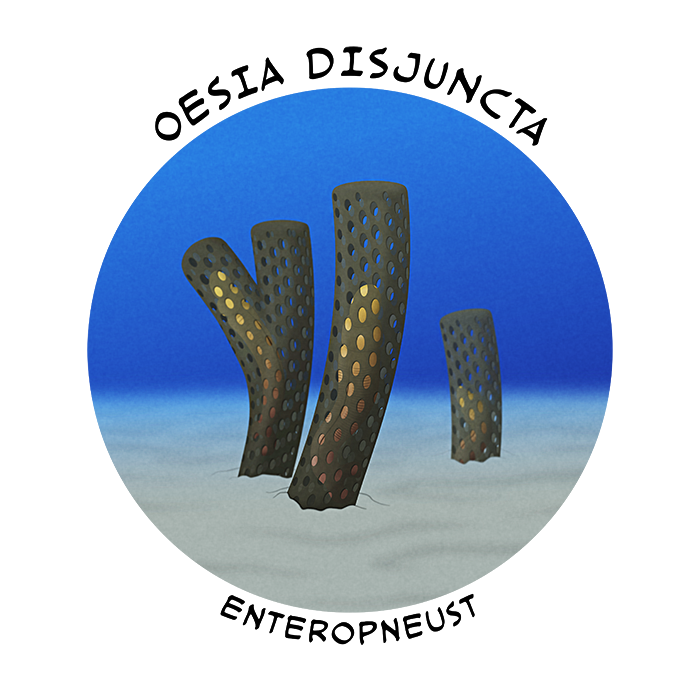Enteropneusts, commonly known as acorn worms, are the most numerous group of modern hemichordates with over 100 known species. Most of them burrow in sediment eating organic detritus, but a few are filter-feeders and some deep-sea species crawl and drift around over the sea floor.
Their fossil record is poor due to their soft bodies, but the transitional form Gyaltsenglossus has recently given us a glimpse at acorn worms’ ancestral links with their cousins the tube-dwelling pterobranchs.
But that’s not the only fossil hemichordate with surprising traits from both lineages. It turns out the characteristic tubes of pterobranchs may actually have been ancestral to all modern hemichordates – with the acorn worms later secondarily losing the ability to make them.

Oesia disjuncta is known from the Canadian Burgess Shale (~508 million years ago). It was first discovered in the early 1900s, but at the time all known specimens were poorly preserved and it couldn’t be easily identified, being tentatively compared to annelid worms, larvacean tunicates, and arrow worms.
More recent studies and more fossil discoveries have now shown it was actually an early acorn worm – but one that lived inside large hollow perforated tubes that had originally been mistaken for fronds of algae.
The worms themselves were up to about 9cm long (3.5″), with a forked “claw-like” grasping appendage at the end of their bodies, and their tubes could be built as much as 50cm tall (1’8″). This was at least as tall as the very largest Burgess sponges, suggesting that Oesia used them to climb higher up into the water column, filter-feeding on plankton with less competition while also being well-protected from predators.

Spartobranchus tenuis, also from the Burgess Shale, seems to have been closer related to modern acorn worms than Oesia – in fact, its anatomy was very similar to living harrimaniids.
About 10cm long (4″), the rear half of its body was long and “spaghetti-like” with a bulbous anchoring structure at the end, and it sheltered inside corrugated tubes buried in the seafloor sediment. It was probably also a filter-feeder and it may represent another transitional stage in acorn worm evolution, shortly before they gave up tube-building entirely and became dedicated burrowers.
